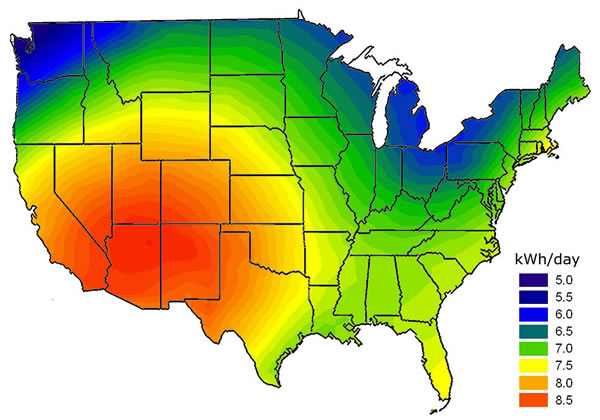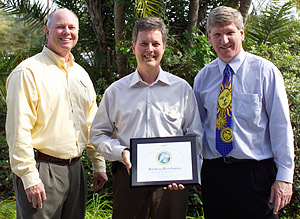On Friday, July 13, 2007, Governor Charlie Crist signed three executive orders that will move Florida from “business as usual” to a national leadership position in renewable energy, energy efficiency and carbon emission reduction.
The first executive order (#07-126) [Adobe Acrobat PDF 20kb] requires state government agencies to “walk the walk.” Among other things, it requires that green house gasses (GHG) resulting from state operations be reduced by 10% in the next 4 years and then consistently over time to 40% below current levels by 2025. It establishes the U.S. Green Building Council’s (USGBC) Leadership in Energy and Environmental Design (LEED) program and ENERGY STAR buildings standards as the new “standard practice” for state facilities. It also directs the establishment of vehicle emissions “baseline” for the government’s state-owned vehicle fleet and then, for new vehicles, the purchase of “only those vehicles with the greatest fuel efficiency in a given class.”
The second order (#07-127) [Adobe Acrobat PDF 23kb] establishes state-wide GHG emission targets. The Order set targets of reaching 2000 levels by 2017 and 1990 levels by 2025. The ultimate goal is to reduce 1990 levels by 80% by 2050. Among other things, this Order directs adoption of maximum allowable GHG emissions by utilities and adoption of the California motor vehicle emission standards. It also directs the Department of Community Affairs to increase the energy performance of new buildings by 15% through the Florida Building Code. Additionally, this order requests the Florida Public Service Commission to initiate rulemaking by September 1, 2007, to require Florida utilities to “produce at least 20% of their electricity from renewable sources (Renewable Portfolio Standard) with a strong focus on solar and wind energy.” The order also requests adoption of IEEE Standard 1547 for Interconnecting Distributed Resources with Electric Power Systems as the statewide standard for utility interconnection and the adoption of net metering on a state-wide basis.
Order number three (#07-128) [Adobe Acrobat PDF 17kb] creates the “Florida Governor’s Action Team on Energy and Climate Change to develop a comprehensive Energy and Climate Change Action Plan that will fully achieve or surpass Executive Order targets for statewide greenhouse gas reductions specified in Executive Order 07-127.” The Governor will appoint the members of this Action Team and it will be staffed and supported by agencies under his direction, specifically the Department of Environmental Protection, the Department of Community Affairs and the Department of Transportation. The resulting Action Plan is to be completed in two phases, with Phase I completed by November 1, 2007 and Phase II completed by October 1, 2008.
In addition, the Governor also signed international agreements with the United Kingdom [Adobe Acrobat PDF 155kb] and the Federal Republic of Germany [Adobe Acrobat PDF 125kb]. Florida joins each nation in efforts to reduce greenhouse gas emissions and calls for immediate worldwide action. Florida hopes to strengthen ties with each country while improving upon the science and technologies used for reducing greenhouse gas emissions, improving public policies and overall increasing climate-friendly commerce between Florida, the United Kingdom and Germany.
For Additional Information
- Serve to Preserve: A Florida Summit on Global Climate Change [http://www.flgov.com/climate_summit]
- MyFloridaClimate Web Site [http://www.myfloridaclimate.com/]







